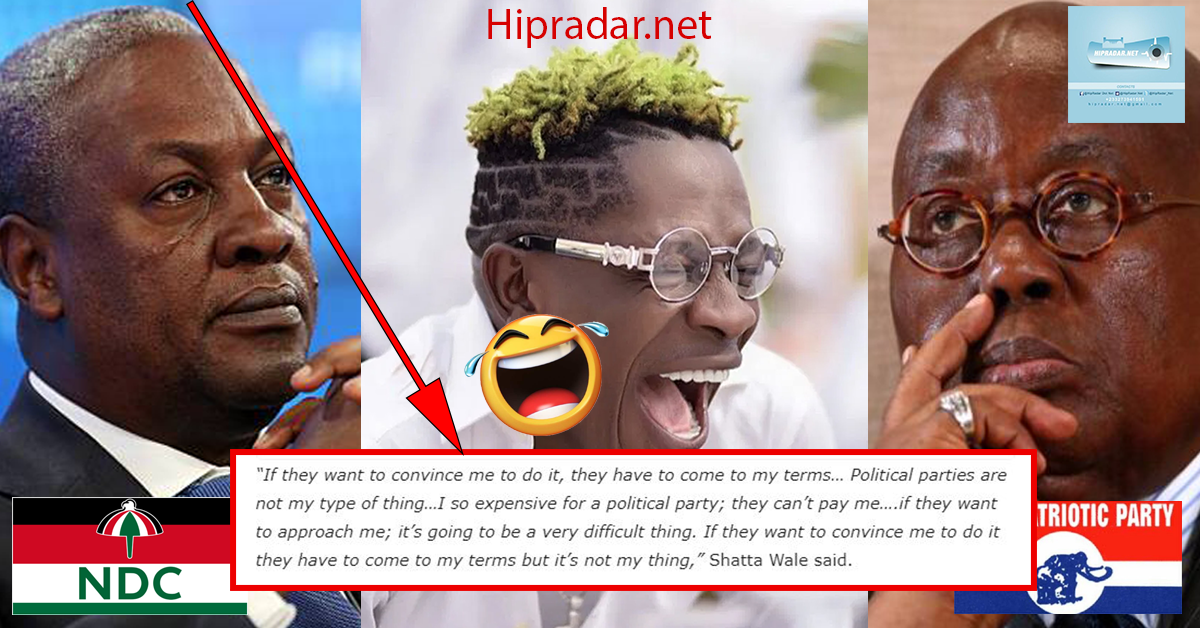Google promised to create a better, faster web with a new standard called AMP

Google devised a strategy in 2015 to effectively take over the mobile web and save the mobile web. The media industry also had little choice but to cooperate for a while.
It started on a merry October morning in New York City; The company had gathered the media at Sadelle’s, a hot breakfast spot in SoHo. Richard Gingras, Google’s vice president of news, said that the open web was in trouble as the reporters ate their bagels and lox. Ads were overpowering, sites were too slow, and they were hard to use. He warned that as a result, people were flocking to social platforms and app stores for better experiences. In the event that this pattern proceeded, it would mean certain death for the web as far as we might be concerned.
But Google had a strategy for responding: AMP, or Accelerated Mobile Pages, is a new design format for mobile-first websites. AMP would guarantee that the versatile web could be as quick, as usable, immediately stacking, and just as well known as portable applications. ” Gingras stated, “We are here to ensure that the web evolves, and our entire focus is on that effort.” We are here to restore the web to its former glory.
At the time, Google used the phrase “Make the web great again” a lot, referring to the young Republican running for president, Donald Trump. The slogan was the result of a lot of technical work: Google was incorporating its own Chrome program into a feasible web-first working framework for workstations; trying to make Progressive Web Apps the new native apps; attempting to make HTTPS, which is more secure, the web standard; furthermore, advancing new high level areas that would plan to make .blog and .pizza as significant as .com. Media executives either didn’t understand much of this or found it boring. The point was that Google was promising to return publishers’ control over distribution to Apple and Facebook.
Following 10 years of papers vanishing, magazine disseminations contracting, and sites’ business diminishing, the media business had become surrendered to its own weakness. Publishers, even the most cynical ones, had become accustomed to participating in any games that search engines like Google and Facebook required in order to increase traffic. Also, as Facebook turbulently turned to video, that passed on Google as the mind-boggling driver of traffic to sites all around the web. Who had any other option?
Terence Eden, a web standards expert and a former member of the Google AMP Advisory Committee, states, “Everyone would do it, because that’s what they need to do to survive.” If Google said, “You must have your homepage colored bright pink on Tuesdays to be the result in Google,” then everyone would comply. One media chief who dealt with AMP projects yet who, as different sources in this story, mentioned obscurity to talk about Google, outlined the tradeoff considerably more basically: ” you need admittance to this crowd, you really want to play by these guidelines.”
Taking on Google’s peculiar new adaptation of the web brought about an overwhelming surge of traffic for distributers from the start: utilizing AMP expanded search traffic to one significant public magazine’s site by 20%, as per the leader who supervised the execution.
Yet, AMP accompanied immense tradeoffs, most prominently around how that multitude of website pages were adapted. AMP made it harder to utilize promotion tech that didn’t come from Google, fraying the connection among Google and the media so seriously that AMP turned into a critical part in an antitrust claim documented only five years after its send off in 2020 by 17 state lawyers general, blaming Google for keeping an unlawful syndication on the publicizing business. The states contend that Google planned AMP to a limited extent to obstruct distributers from utilizing elective promotion instruments — devices that would have created more cash for distributers and less for Google. The US Justice Department filed an additional lawsuit in January 2023 that went even further, claiming that Google intended for AMP to be “an effort to push parts of the open web into a Google-controlled walled garden, one where Google could dictate more directly how digital advertising space could be sold.”
AMP appears to have vanished in 2023. Even Google no longer appears to be bothered by the fact that the majority of publishers have begun to withdraw support. The ascent of ChatGPT and other man-made intelligence administrations represent a significantly more immediate danger to its pursuit business than Facebook Moment Articles and Apple News could possibly do. In any case, the media business is as yet reliant upon Google’s fire hose of traffic, and as the organization looks for its best course of action, the account of how it savagely involved AMP trying to control the very design and business of the web clarifies precisely the way that far it will go to safeguard its business — and how weak the web might be to stop it.
AMP achieved remarkable success. Then it didn’t work. In addition, the story of AMP contains all of the evidence you could ever need to discredit the largest online company.
The shift to smaller screens In early 2015, a few months before AMP went live, one of Google’s most important metrics was about to change dramatically: The number of mobile phone searches was about to surpass that of desktop and laptop computer searches. This shift had been bound to happen, and Google considered it to be an existential danger. Ads, which made up about 90% of the company’s revenue and had helped it grow to a nearly $75 billion annual business, were by far the most important, appearing at the top of desktop browser search results. At the time, a typical mobile search generated approximately one sixth of the ad revenue of a desktop search. The undeniably versatile centered future could mean an unfortunate income drop for Google.
Instead of moving to closed gardens like Facebook Instant Articles or Apple News, which offered superior mobile reading experiences, Google framed AMP as something like a civic mission in public. Gingras stated at the launch event that “the web has not fully satisfied users’ expectations on mobile to some extent.” We hope that will change.
However, the battle to fix the mobile web wasn’t just a goodwill gesture in the name of cooperation, transparency, and kumbaya. Some internal observers interpreted it as a struggle for Google’s own survival. The mobile web was becoming the only web that really mattered as smartphones became the default mode of browsing for billions of people worldwide. Google’s rivals were significantly more in control of how smartphone users lived their lives: perusers were getting their report from local applications and from exclusive organizations made by Facebook and Apple. Google was concerned that it could be left out completely if a sufficient number of users switched to these faster, simpler, and more controlled experiences.
Publishers suffered greatly as Big Tech companies took over the advertising industry. In the past, newspapers were used to promote your new hair salon, and you might also purchase advertisements on local television to promote the most recent appliances that are available for purchase in your store. By 2015, most publicists just went through Facebook and Google, which offered a more designated and more effective method for arriving at purchasers.
Google occasionally attempted to make up, clearly aware that it was taking revenue from publishers. In some cases, this required the development of brand-new products, such as the bafflingly named Google Play Newsstand, which provided media companies with yet another location to distribute and sell content. In some cases — frequently, really — it implied simply providing distributers with a lot of cash at whatever point an administration would blow up, similar to the €60 million “Computerized Distributing Development Asset” Google set up in France after a gathering of European distributers sued and settled with the pursuit monster.
This “we care about distributers!” Silicon Valley has a long history of dance. Before mostly giving up on that project, Apple made a brief promise that the iPad would save the news industry by persuading publishers all over the world to create bespoke tablet magazines. Facebook stays in a never-endingly whipsawing relationship with the media, as well: it will advance stories in the News source just to later downgrade them for “Significant Social Communications,” then, at that point, guarantee distributers unending video eyeballs before generally abandoning Facebook Watch.
To keep users interested and entertained, the platforms need content; distributers need dissemination for their substance to be seen. It’s best described as a perfect symbiotic partnership. At worst, and this happens far too frequently, the platforms force publishers to do whatever they need to in order to boost engagement during that quarter.
During the course of 2015, Google also held a clubby “unconference” known as Newsgeist while internally debating the most effective response. As a way to collaborate with and hear from the news industry, Google organized these on a regular basis with the help of the Knight Foundation. CUNY professor and media critic Jeff Jarvis had been urging Google to create what he called “the embeddable newspaper” at Newsgeist events for years. This would allow news articles to be displayed on the internet in much the same way that a YouTube video can be embedded practically anywhere. The concept also pleased Gingras; He was a firm proponent of what he referred to as “portable content.”
In May 2015, at the main Newsgeist Europe in Helsinki, Finland, Moment Articles was a subject of much discussion. Particularly for Jarvis, Instant Articles appeared to be a useful technical prototype with all the wrong characteristics: It was closed off, only worked on one platform, and publishers got nothing out of it. Jarvis invested energy at the meeting contending for somebody — probably Google — to fabricate a superior other option.
In the end, the company developed AMP. Done well, it could bring a similar speed, straightforwardness, and plan to the whole web — without shutting it off. Google chose two people who had come from Google Plus to lead the effort: David Besbris, who had driven the organization’s unruly long range informal communication exertion, and Malte Ubl, who assisted with building the informal organization’s specialized foundation.
At the very least, that’s how Google publicly described it. As indicated by interviews with previous representatives, distributing leaders, and specialists related with the beginning of AMP, while it was waxing beautiful about the worth and eventual fate of the open web, Google was secretly encouraging distributers into giving over close all out control of how their articles functioned and looked and adapted. Additionally, it was utilizing the most potent real estate on the internet, the top of search results, to achieve its goals.
“[Google] came to us and said, the web is broken, advertisements aren’t stacking, yakkity yak, blah. One magazine product executive states, “By establishing this clean standard, we want to provide users with a better user experience.” My response was that the principal issue is advertisements, so how about you fix the promotions? They stated that the ads cannot be fixed. It’s too difficult.”
PCU, or Portable Content Unit, was the name of Google’s upcoming web standard before it was referred to as AMP. The new format’s team of Googlers had only one objective, or at least one that was important: make website pages quicker. There were a lot of other objectives, like giving publishers options for branding and monetization, but load times were more important. AMP would feel as instantaneous and native as an app if the page appeared immediately after a user tapped the link in search results. The speed was the only thing that mattered.
Google had previously attempted to encourage publishers to speed up their own webpages. Load times had for some time been a calculate how the web crawler positioned destinations on work area, for example, and burden times were introduced up front in Google Examination. Google even constructed an instrument called “Moment Pages” that attempted to figure which locales clients would tap on and pre-render those pages so they’d show up more rapidly.
However, the mobile web continued to, in a word, fail. According to Aron Pilhofer, a former media executive who is now a journalism professor at Temple University, publishers considered mobile web traffic to be essentially junk traffic back then and to a great extent still do today. Prefaced with “mobile,” many mobile websites were distinct from their desktop counterparts. or “m.” in the URLs they use. The entire industry was in the midst of a regrettable obsession with autoplaying video, and publishers made up for the lack of screen real estate by placing more ads on each page. Telephone programs were terrible; Even worse were the webpages.
At the time, Google didn’t have good tools for understanding mobile pages, so it couldn’t just say, “We just like fast pages.” There simply was not enough time to develop those metrics and then encourage publishers to update their websites to meet Google’s speed requirements. Google believed it required an immediate solution internally. The battle was on. AMP was a blunt instrument that was made to produce results quickly. Google’s Gingras stated at the launch event in 2015 that the goal of AMP is to “make sure the World Wide Web is not the World Wide Wait.”
AMP was, in numerous ways, a stage in reverse for the web. Joshua Benton of Nieman Lab commented at the time that Google’s AMP-powered sample websites “look a lot like the web of, say, 2002, shrunk down to a phone screen.”
But it came quickly. Furthermore, to research, that was all that made a difference.
Google was aware that widespread adoption was required for AMP to function. Be that as it may, essentially requesting that distributers support another standard would be quite hard. The entire issue was publishers’ neglect of mobile websites, and they were unlikely to sign up to work on them for Google’s benefit.
The team tried a few things, like automatically converting stories from the Google Play Newsstand and elsewhere, to get more AMP content. When a post was published, WordPress began developing a plug-in that made creating AMP pages as simple as checking a box. AMP was compared to RSS in some ways, both within and outside of Google. It was another syndication format, another box to click next to the one that tweets the story and posts the top Instagram image. However, Google was concerned that this strategy would result in a monotonous appearance and reader experience for all AMP pages. What Google truly required was for distributers to help AMP as well as embrace it.
The group quickly came up with a much better growth hack: Google’s query items. It would be simple for Google to incorporate AMP into the way it ranks search results, effectively instructing publishers that AMP-powered pages would be prioritized above all others. It had done something akin with HTTPS in the past, pushing for a new web standard.) Publishers would have no choice but to use AMP because they are almost entirely dependent on Google traffic.
Given that Google has always maintained that it places the “relevance” of a webpage above all else, such an aggressive move would be a bad look for the company as well as potentially anti-competitive. However, there was a compromise, or perhaps a loophole: the Top Stories carousel, a relatively new Google search product that displayed a few news stories scrolling horizontally at the top of some search results pages. They weren’t among the “10 blue links” Google is famous for, so they weren’t looked at. The rules might be different because they were separate entities.
From the beginning, Google stated that AMP would not be a factor in traditional “10 blue link” search results. A number of publishing executives claim that they are still unsure whether that is true: at the point when Google said AMP doesn’t make any difference, nobody trusts them,” one says. The company denies ever playing a role in the rankings of search results.) However, the carousel would only display AMP pages, and there would be a lightning bolt in the corner to indicate that tapping that card would provide users with the same instant loading experience as Apple News and Instant Articles.
That merry go round took up the vast majority of the valuable space on a telephone screen, which made Popular narratives probably the main land on the portable web. Thus, the growth hack was successful. A who’s who of publishers had signed up to support the new format when AMP first launched at the beginning of 2016: The Guardian, BuzzFeed, the BBC, The New York Times, and Vox Media, the parent company of The Verge, all got right to work developing for AMP. In the following months, additional members would join.
However, many of these publishers were not necessarily signing up for the technology or the vision of AMP. Not at all. Google’s determined spotlight on page speed, and on delivery as fast as conceivable to defeat Facebook and Apple, implied the principal adaptations of AMP couldn’t do definitely. It did not support comments or paywalls, and JavaScript restrictions prevented publishers from integrating analytics or advertising from third parties. The majority of interactive elements, including straightforward things like tables and charts, failed.
It turned out that AMP was even slower than that. As long as they were able to control the amount of ads and extra trackers, multiple publishers were able to create pages that loaded faster than AMP pages, according to internal tests. On AMP, it was much harder to create slow pages because AMP couldn’t do much, but there were many other ways to create good pages.
According to long-time SEO consultant Barry Adams, even if AMP pages did appear to load faster in search results, “it felt faster because Google cheated.” Google’s AMP Validator was used by publishers to validate the functionality of AMP-powered pages before allowing them to be displayed in the carousel. Google would take a copy of the entire page and store it on its own servers while it was checking the code. Then, rather than loading the webpage itself, Google would load its stored version when the article was clicked on in the search results. Any page pre-delivered that way would stack quicker, AMP etc.
The AMP store made it harder for distributers to rapidly refresh their substance — and made it almost inconceivable for them to comprehend how individuals were utilizing their destinations. On stored pages, even the URL started with “google.com,” instead of the distributer’s own area. Maybe Google had subsumed the whole distributing industry inside its office park in Mountain View.
Publishers were repeatedly assured by Google that this constrictive, Google-controlled version of AMP was only the beginning and that there would be much more to come. However, AMP was required from the beginning for the carousel, the crucial new space in search results. The issue was that when Google sent off it, they likewise said, ‘You need to utilize AMP. Adams asserts, “We built a standard, it’s shite, it’s terrible, it’s not ready, it only does about a quarter of what you need it to do, but we need you to use it anyway because otherwise we won’t show your articles in mobile search results anymore.” That was the thing that upset everyone.
According to a former AMP employee, “the audience people hated it because it was against audience strategy.” The information individuals loathed it since it was against publicizing and security methodology. The analysts resented it because we obtained extremely poor behavioral data from it, and the engineers resented it because it is a terrible format to work with. Everyone is thinking, “Okay, so apart from the traffic, there is no upside to this.”
In addition, the traffic was worth less in light of the fact that it had less and more restricted advertisements. ” This happened to every publisher; the AMP audience is less valuable. It’s huge number of pennies and not having any dollars,” one leader says. ” An AMP article procured 60% of what a [standard] article procured… It’s sufficiently low to be recognizable. You were merely engaging in a game of “Would I make more money if I didn’t have all this traffic?”
Another executive asserts, “Google did not have an answer for the revenue gap — there was a lot of hand-waving, a lot of saying they would work with us.” Like every other Google product, there was a lot of hype and big plans for AMP, but none of those plans were implemented.
Yet, the site hits, generally speaking, were sufficient to offset the expenses. The majority of publishers place a significant value on Google traffic, which cannot be overstated. This year, the analytics company Chartbeat estimated that search traffic made up 19.3 percent of all traffic to websites. This figure does not even take into account products like Google News and the news feed in the Google app, which also make up a significant portion of the traffic to many publishers. Even the largest websites can receive up to 40% of their traffic from Google as a whole. It’s a matter of life or death to disappear from Google.
If a larger media company had its own product and engineering staff, it might be able to work around AMP’s limitations, or at least deal with them without affecting the rest of the business. AMP was viewed by some large publishers as nothing more than additional distribution work. However, many smaller publishers still felt they had no choice but to support AMP because they lacked the staff or resources to manage the technical issues or maintain yet another version of their website.
Everyone had to play the game at some point. Google’s methodology is consistently to make detainee’s quandaries that it controls — to make a framework to such an extent that if by some stroke of good luck one individual deformities, then, at that point, they win,” a previous media leader says. Everyone else had to use AMP to enter that carousel or risk being left out, as long as they were willing to do so.
AMP was still viewed as a net benefit by many Google employees as a means of preventing the internet from becoming a collection of walled gardens. However, for the majority of publishers, AMP was, at best, another app to send content to. One former media executive asserts, “We didn’t see it as any different from building on Android or building on iOS.” This was the best way to provide a mobile experience. It was similar to supporting Apple News, Facebook Instant Articles, or even RSS feeds to support AMP. It was simply more work on additional platforms.
Many publishers perceived the Top Stories carousel as a shakedown because of this. Google claimed that it was just a nice improvement to the user experience and an incentive to do the obvious right thing. However, publishers recognized an implicit message: abide by this new format or risk losing valuable search traffic. Also, your whole business.
despite all of the technical issues with AMP and doubts about Google’s intentions, the new format was successful from the start. An Adobe study found that just eight months into the year, AMP pages had grown by 405 percent and already accounted for 7% of mobile traffic to “top publishers” in the US, less than a year after their official launch. Microsoft intended to incorporate AMP into the iOS and Android Bing app. It was also being considered for use by Twitter.
Google had made it clear from the beginning that AMP was not a Google product. It was going to be an open-source platform with all of its source code on GitHub, which could be forked, edited, and used in any way that fit their needs. The web’s success was AMP’s, not Google’s.
In fact, Google had complete control over AMP. The antitrust suit filed against Google in 2020 alleges that the company adopted a policy of being a “Benevolent Dictator For Life,” and even though it handed over control of the AMP project to the OpenJS Foundation in 2019, it continued to exercise significant control over the project. Jeremy Keith, a web developer who was a former member of the advisory council for AMP, states, “When it suited them, it was open-source.” However, Google was in charge of answering any questions about control and direction.
I was told by a number of sources that Google employees awkwardly read lawyer-approved statements about things being open and opt-in before Google got its way. These arguments about the future of the web ended. One media executive recalls that, following a debate regarding the cache and the data it provided to Google, “they started bringing a whole bunch of people no one had ever heard of to committee meetings to say how wonderful the cache was.” Additionally, Google always prevailed in debates regarding the roadmap or new features.
“I have presumably that the drawn out play was to say, ‘We’re Google. This is a brand-new web language. You won’t be on Google’s first page anymore if you don’t like it.'”
After some time, AMP started to help all the more promotion organizations — or, rather, more promotion networks started to accomplish the work expected to help AMP’s secured structure. However, many people remained of the opinion that Google’s own ad tech provided the best user experience. This fact ended up in multiple antitrust lawsuits against Google, making it the most contentious aspect of AMP’s history. The suits say, among other things, that Google used AMP to stop a practice called “header bidding,” which lets publishers show their inventory to multiple ad exchanges at once to get the best real-time price. In particular,” the 2020 claim says, “Google made AMP unfit to execute JavaScript in the header, which baffled distributers’ utilization of header offering.” “AG Paxton’s claims about AMP and header bidding are just false,” said a Google spokesperson, Meghann Farnsworth. A district court ruled in 2022 that the case “does not plausible [sic] allege AMP to be an anticompetitive strategy” and struck out most of the AMP-related provisions in that 2020 lawsuit.
Google’s vision for the product grew even more ambitious as AMP gained popularity. The company began to suggest that some publishers build their entire websites within AMP rather than maintaining separate websites with AMP pages. The AMP project website proudly stated that it was “an architectural framework built for speed” on launch day in October 2015. “The creation of websites and ads that are consistently fast, beautiful, and high-performing across devices and distribution platforms,” AMP promised by the end of 2017 It was no longer limited to mobile devices or articles. It was the entire web, revamped Google’s direction and perpetually viable with its web search tool.
Eden asserts, “I 100% believe that Google would have loved to have said that AMP is the future of HTML.” The long-term strategy, in my opinion, was to declare, “We’re Google.” This is a brand-new web language. You won’t be on Google’s first page anymore if you don’t like it.'”
At last, however, Google’s most fantastic aspirations didn’t happen. Neither did its littlest aspirations, truly. The company started to pull back as publishers continued to thrash against AMP’s restrictions and as general scrutiny of Google increased.
Google announced in 2021 that it would begin including all pages, not just AMP-powered ones, in the Top Stories carousel. In May of last year, Google permitted some local news outlets to deviate from this requirement in order to cover covid-related stories. Most publishers stopped using AMP once they were no longer required to. The Washington Post left the platform the same year, and a slew of other publications, including Vox Media, spent 2022 looking for alternatives. However, some of those publishers admit that they are concerned about traffic decreasing at this time. Even though Google maintains that it does not incorporate AMP into search results, the company’s opaque nature makes it difficult to place trust in it.
The true irony of AMP is that, despite publishers abandoning the platform, many acknowledge that AMP is actually quite good at the moment. It accepts comments and features that are more interactive; It still goes quickly and easily. It appears to be on the verge of becoming a truly useful project now that it is run by the OpenJS Foundation and free from the incentive to rank well in search results. Although it is unlikely to replace HTML anytime soon, it may help usher in the concept of embeddable, portable content that Jarvis and Gingras had in mind many years ago. Designers might utilize AMP to cause electronic undertakings that to feel like Instagram Stories or the TikTok feed. ” AMP possibly might have been — somehow or another, I actually think could be — a truly fascinating approach to partnering content that removes that center individual from the blend,” Pilhofer says.
Everybody I addressed likewise thinks Center Web Vitals is a decent and significant thought, as well. Speed matters like never before; How you achieve your goal is less important.
One source I addressed contemplated whether the web may be a better place in the event that the main variants of AMP had really been great. Would publishers have put in even more resources to support the format, giving Google even more control over how the web works and how it makes money, as the antitrust lawsuits claim? It surely appears to be conceivable.
In any case, one thing demonstrated certain: After the initial days of AMP, when publishers felt that Google was making grand declarations about saving the web while simultaneously forcing them to consume poor products that served only Google’s interests, there was simply no going back for Google. Even Apple News and Facebook Instant Articles, despite their limitations and difficulties, appeared optional. AMP was not.
According to Adams, “It may have had good intentions about making the mobile web better,” but “went about it in probably one of the worst ways you could have imagined,” Adams states. It was a PR bad dream.”
Aligning itself with the expansion of the internet was one of the smartest and most profitable decisions that Google ever made. It made the vast internet a little bit easier to navigate, utilized initiatives like Fiber and Android to assist in increasing the number of people who were online, and provided useful free services. Google also rose to great heights as the web did. However, in order to ensure that profits continued to flow, Google mortgaged many of its openness concepts when closed platforms threatened the web. And as a long-term effect, it probably made a lot of news publishers realize that Google might not be a good company, according to Adams. Furthermore, we really want to view their predominance somewhat more in a serious way as a report by its own doing.”
A spokesperson for Google, Meghann Farnsworth, stated that the company “will continue to collaborate with the industry to build technology that provides helpful experiences for users, delivers value to publishers and creators, and helps contribute to a healthy ecosystem and the open web” in response to this story.
Google is still the largest and most powerful company on the internet. However, it is no longer viewed as a partner throughout the publishing industry. In the end, the open web was neither saved nor destroyed by AMP. However, it did endanger Google’s good name one slow-moving webpage at a time.






